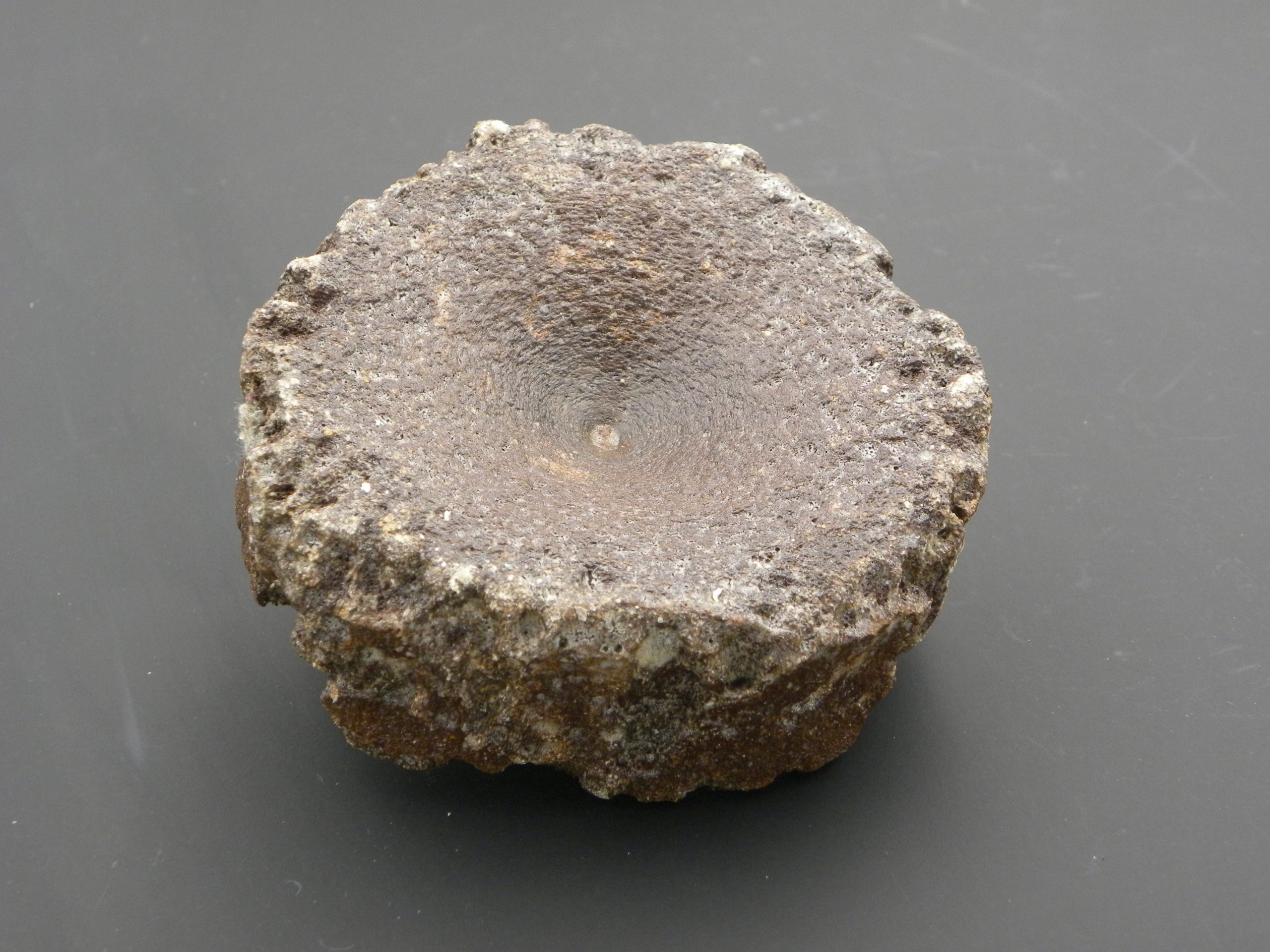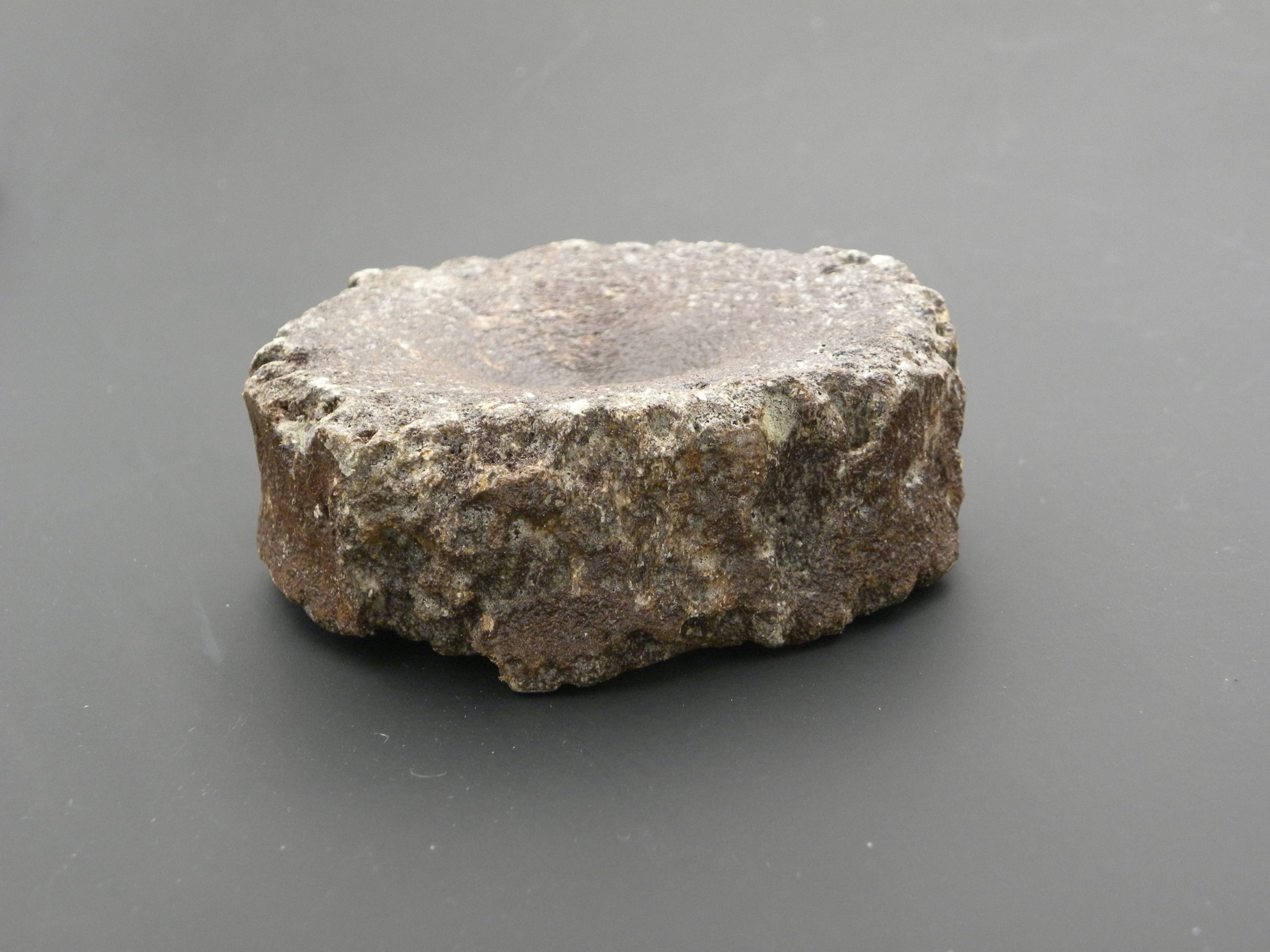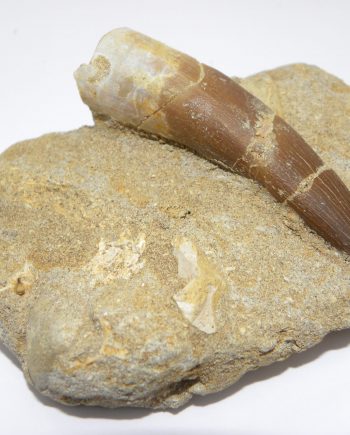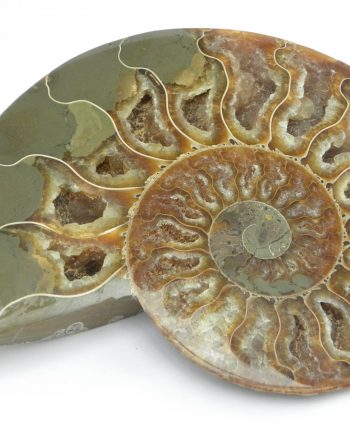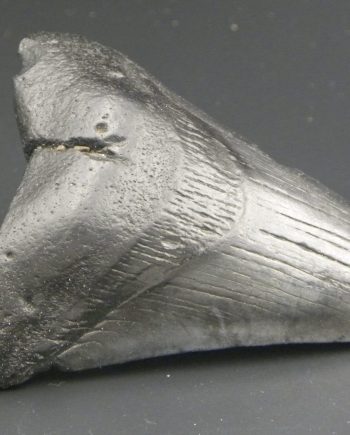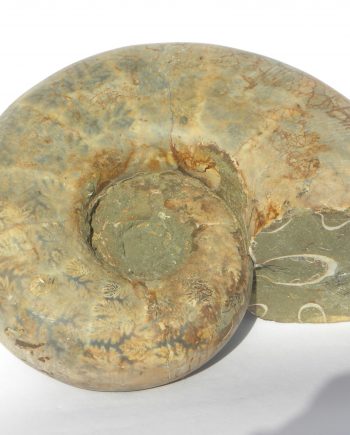Description
Large Fossilised Ichthyosaur Vertebrae from Dorset
This large fossilised Ichthyosaur vertebrae, is from the Jurassic Coast. It measures 8.5cm across and 2.8cm deep. It dates from the upper Jurassic period, and is 150 million years old. Ichthyosaurs were large, air breathing marine reptiles. They were incredibly streamlined creatures. Looking more like a porpoise, or even a tuna, than a reptile. The largest ones found so far on the Jurassic Coast, are around 10 metres long.
Mary Anning, was a famous palaeontologist from Lyme Regis. During her life she discovered a number of fossilised ichthyosaurs. The first one was when she was only twelve years old. It created a major debate by the scientists of the day. They couldn’t decide what sort of creature it actually was. Some speculated that it must be a crocodile, one that had somehow ended up in Dorset. It was eventually decided to name it an Ichthyosaurus, Greek for ‘fish lizard’. A number of her finds including her Ichthyosaur can be seen in the Natural History Museum. The legacy of Mary Anning is still ongoing. Her life story is portrayed in the recently released film Ammonite.
The first Ichthyosaurs evolved and were swimming the seas during the Triassic period. They continued to evolve until the Cretaceous period. During this time a number of different species evolved. Some were comparatively small, while the largest measured 16 metres. These creatures had short necks and extra large eyes. It is thought that this enabled them to swim at greater depths. Ichthyosaurs were warm blooded creatures, ones that gave birth to live young. These creatures eventually became extinct several million years before the dinosaurs.
Back To Jurassic Coast Fossils Back to Fossils


